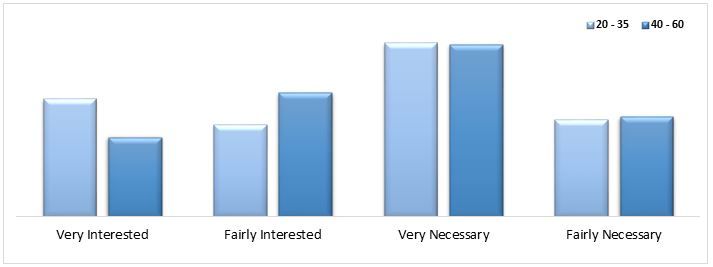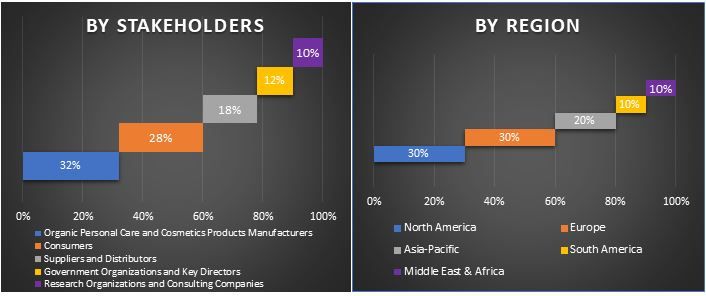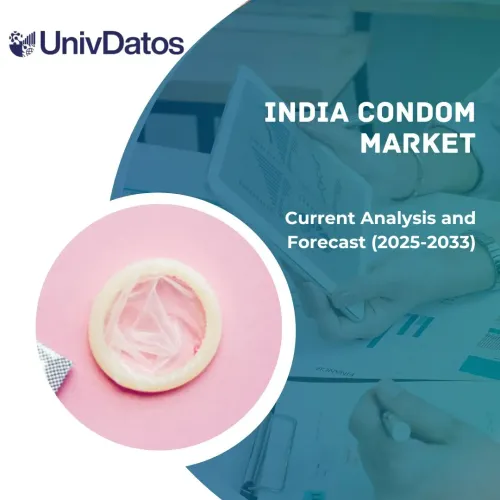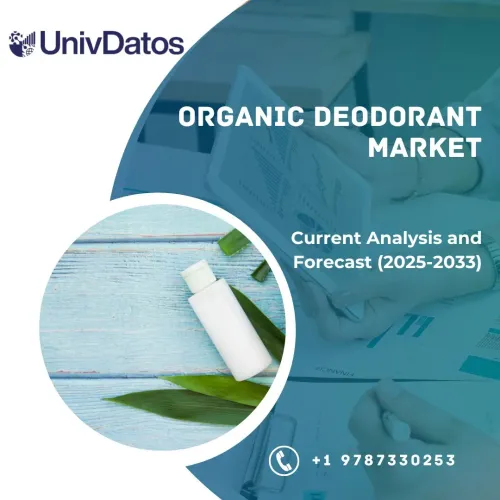- Home
- About Us
- Industry
- Services
- Reading
- Contact Us
Organic Personal Care and Cosmetics Products Market: Current Analysis and Forecast (2021-2027)
Emphasis on Type (Skin Care, Hair Care, Oral Care, Makeup Cosmetics); Consumer Group (Male, Female); Distribution Channels (offline (retail) and online); and Region & Country
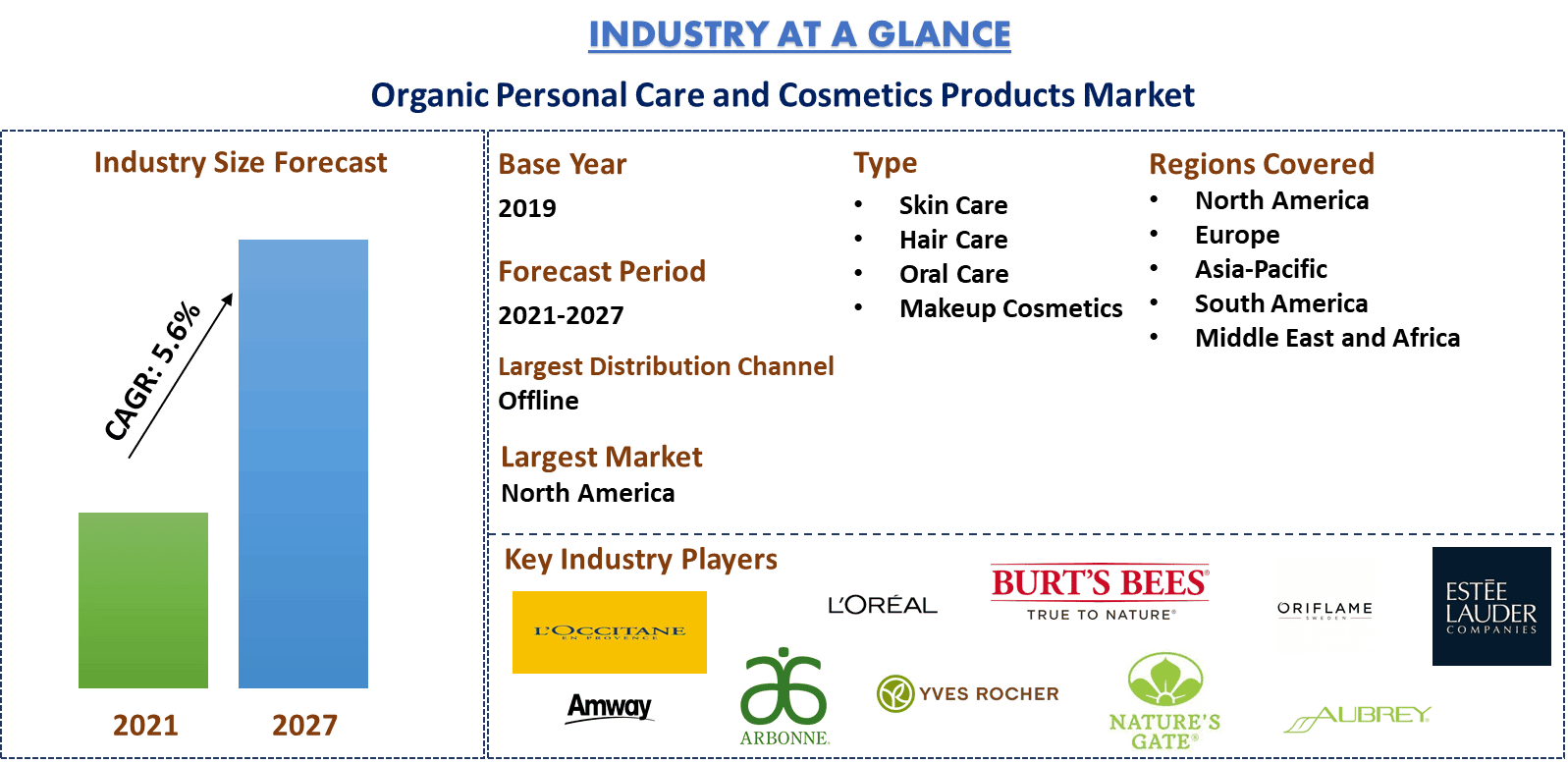
Organic personal care and cosmetics products market is set to grow with a CAGR of 5.6% during the forecast period. Organic personal care and cosmetic products mainly comprise plant ingredients and do not contain chemicals such as parabens, phthalates, aluminum salts, and petrochemicals, which are potentially harmful to an individual’s health. Increasing beauty consciousness and health awareness are prime factors boosting market growth. It is estimated that approximately 9,500 people in the U.S. are diagnosed with skin cancer every day. Research estimates that nonmelanoma skin cancer (NMSC), including basal cell carcinoma (BCC) and squamous cell carcinoma (SCC), affects more than 3 million Americans a year.
Stringent government regulations especially in developed countries on inorganic personal care and cosmetic products have prompted manufacturers to introduce new products and to focus on research and development. As a result, the organic personal care market has become a major part of the cosmetics and wellness sector over the past few years. This trend is expected to continue over the forecast period. The rise of the online market where consumers can access a wide range of products from any part of the world has been a primary reason for the increase in the level of accessibility and is expected to remain a key contributing factor for market growth. E-commerce channels allow consumers to gain access to products that would otherwise not be available in their local stores and malls, which has made them especially popular in emerging markets.
In a survey published in MDPI, 70% of the participants wish to buy natural cosmetics. 56% of them wish to buy brands that are newcomers to the cosmetics market. 78% of the participants tend towards following a healthy lifestyle, whereas 68% of participants tend towards buying bio-foodstuffs. 86% of participants are influenced in their decisions by environmental awareness. 70% of the participants are willing to pay extra for a natural cosmetic made of natural ingredients. 68% of participants are similarly willing to pay extra for a cosmetic in packaging made of natural material.
Sephora’s US online sales are reportedly up 30% in 2020 versus 2019. Similarly, e-commerce technology and digital marketing company ITCAN has reported that online orders for skincare and makeup products in Saudi Arabia has soared up to 700% as consumers sought to avoid public places and online orders for skincare rose by 105.37%, with 32.7% coming from new users, showing a conversion rate of 63.59%.
Millennials are leading this trend toward healthy and clean products, driven both by the sheer number of consumers in this age group as well as their buying behavior. They are the largest potential buying group, accounting for about 32% of the world’s population, compared to 17% for those over 55 years old. Millennials tend to be frequent purchasers of beauty products. In one category, color cosmetics, research firm TABS Analytics has found that millennial women in the United States are by far the heaviest buyers, with 32% of women aged 18-24 and 26% of women aged 25-34 purchasing 10 or more types of color cosmetics per year, compared with 20% of women overall.
Women Interest Towards and Necessity of Facial Skin Care Products, By Age Group (%)
The organic personal care and cosmetics products market is highly fragmented. The availability of numerous global and local players across regions makes the industry highly competitive. The key players with a considerable market share in the industry are L’Occitane en Provence, LOreal International, Arbonne International, LLC, Burt’s Bees, Estee Lauder Companies Inc., Amway Corporation, Oriflame Cosmetics S.A., Yves Rocher, Aubrey Organics Inc., and Nature’s Gate. Several M&As along with partnerships have been undertaken by these players to facilitate customers with hi-tech and innovative products.
Insights Presented in the Report
“Amongst Type, Skin Care is anticipated to dominate the market during the analyzed period”
Furthermore, the organic personal care and cosmetics products market is mainly bifurcated into skincare, hair care, oral care, and makeup cosmetics. In 2020, the skin care segment accounted for a maximum market revenue share of XX% and is expected to remain dominant during the analyzed period owing to the rising skin cancer cases globally, and increasing beauty consciousness and health awareness.
“Amongst Consumer Group, Female segment dominated the market during the forecast period”
Based on the consumer group, the market is mainly fragmented into male and female. In 2020, the female segment accounted for a maximum market revenue share of XX% and is expected to remain dominant during the analyzed period.
“Amongst Distribution Channels, Offline or Retail segment dominated the market during the forecast period”
Based on distribution channels, the market is mainly fragmented into offline (retail) and online. In 2020, the offline segment accounted for a maximum market revenue share of XX% and is expected to remain dominant during the analyzed period.
“North America is among the top contributor to the market of organic personal care and cosmetics products market”
For a better understanding of the market dynamics of the organic personal care and cosmetics products market, a detailed analysis was conducted for different regions across the globe including North America (United States, Canada, Mexico, and Rest of North America), Europe (United Kingdom, Germany, Spain, France, Italy, Russia, and Rest of Europe), Asia Pacific (China, India, Japan, Australia, and Rest of Asia-Pacific), South America (Brazil, Argentina, and Rest of South America), Middle East and Africa (South Africa, Saudi Arabia, and Rest of Middle East and Africa). North America region dominated the market and generated revenue of US$ XX Billion in 2020 owing to the growing demand for clean label products, premium and luxury natural and organic personal care products coupled with an increasing number of health-conscious consumers in the region.
Reasons to buy this report:
- The study includes market sizing and forecasting analysis validated by authenticated key industry experts
- The report presents a quick review of overall industry performance at one glance
- The report covers an in-depth analysis of prominent industry peers with a primary focus on key business financials, product portfolio, expansion strategies, and recent developments
- Detailed examination of drivers, restraints, key trends, and opportunities prevailing in the industry
- The study comprehensively covers the market across different segments
- Deep dive regional level analysis of the industry
Customization Options:
Organic Personal Care and Cosmetics Products Market can further be customized as per the requirement or any other market segment. Besides this, UMI understands that you may have your own business needs, hence feel free to connect with us to get a report that completely suits your requirements.
Table of Content
Analyzing the historical market, estimation of the current market, and forecasting the future market of the Organic Personal Care and Cosmetics Products Market were the three major steps undertaken to create and analyze the adoption of organic personal care and cosmetics products across major regions globally. Exhaustive secondary research was conducted to collect the historical market numbers and estimate the current market size. Secondly, to validate these insights, numerous findings and assumptions were taken into consideration. Moreover, exhaustive primary interviews were also conducted, with industry experts across the value chain of the organic personal care and cosmetics products sector. Post assumption and validation of market numbers through primary interviews, we employed a top-down/bottom-up approach to forecast the complete market size. Thereafter, market breakdown and data triangulation methods were adopted to estimate and analyze the market size of segments and sub-segments the industry pertains to. Detailed methodology is explained below:
Analysis of Historical Market Size
Step 1: In-Depth Study of Secondary Sources:
Detailed secondary study was conducted to obtain the historical market size of the organic personal care and cosmetics products through company internal sources such as annual report & financial statements, performance presentations, press releases, etc., and external sources including journals, news & articles, government publications, competitor publications, sector reports, third-party database, and other credible publications.
Step 2: Market Segmentation:
After obtaining the historical market size of the organic personal care and cosmetics products market, we conducted a detailed secondary analysis to gather historical market insights and share for different segments & sub-segments for major regions. Major segments included in the report are type, consumer group, distribution channel, and region. Further country-level analyses were conducted to evaluate the overall demand for organic personal care and cosmetics products in that region.
Step 3: Factor Analysis:
After acquiring the historical market size of different segments and sub-segments, we conducted a detailed factor analysis to estimate the current market size of organic personal care and cosmetics products. Further, we conducted factor analysis using dependent and independent variables such as the rising skin cancer rates and increasing beauty consciousness and health awareness among others. A thorough analysis was conducted for demand and supply-side scenarios considering top partnerships, merger and acquisition, business expansion, and product launches in the organic personal care and cosmetics products industry across the globe.
Current Market Size Estimate & Forecast
Current Market Sizing: Based on actionable insights from the above 3 steps, we arrived at the current market size, key players in the organic personal care and cosmetics products market, and market shares of the segments. All the required percentage shares split, and market breakdowns were determined using the above-mentioned secondary approach and were verified through primary interviews.
Estimation & Forecasting: For market estimation and forecast, weights were assigned to different factors including drivers & trends, restraints, and opportunities available for the stakeholders. After analyzing these factors, relevant forecasting techniques i.e. top-down/bottom-up approach was applied to arrive at the market forecast about 2027 for different segments and subsegments across the major markets globally. The research methodology adopted to estimate the market size encompasses:
- The industry’s market size, in terms of value (USD) and the demand rate of organic personal care and cosmetics products across the major markets domestically
- All percentage shares, splits, and breakdowns of market segments and sub-segments
- Key players in the organic personal care and cosmetics products market in terms of services offered. Also, the growth strategies adopted by these players to compete in the fast-growing market
Market Size and Share Validation
Primary Research: In-depth interviews were conducted with the Key Opinion Leaders (KOLs) including Top Level Executives (CXO/VPs, Sales Head, Marketing Head, Operational Head, and Regional Head, Country Head, etc.) across major regions. Primary research findings were then summarized, and statistical analysis was performed to prove the stated hypothesis. Inputs from primary research were consolidated with secondary findings, hence turning information into actionable insights.
Split of Primary Participants in Different Regions
Market Engineering
Data triangulation technique was employed to complete the overall market estimation and to arrive at precise statistical numbers of each segment and sub-segment of the organic personal care and cosmetics products market. Data was split into several segments & sub-segments post studying various parameters and trends in the areas of type, consumer group, distribution channel, and region of the organic personal care and cosmetics products market.
Main Objective of the Organic Personal Care and Cosmetics Products Market Study
The current & future market trends of organic personal care and cosmetics products were pinpointed in the study. Investors can gain strategic insights to base their discretion for investments from the qualitative and quantitative analysis performed in the study. Current and future market trends were determined the overall attractiveness of the market at a regional level, providing a platform for the industrial participant to exploit the untapped market to benefit as a first-mover advantage. Other quantitative goals of the studies include:
- Analyze the current and forecast market size of organic personal care and cosmetics products in terms of value (US$). Also, analyze the current and forecast market size of different segments and sub-segments
- Segments in the study include areas of type, consumer group, and distribution channel
- Define and analysis of the regulatory framework for the organic personal care and cosmetics products industry
- Analyze the value chain involved with the presence of various intermediaries, along with analyzing customer and competitor behaviors of the industry
- Analyze the current and forecast market size of the organic personal care and cosmetics products market for the major region
- Major regions studied in the report include North America (U.S., Canada, Mexico, and Rest of North America), Europe (United Kingdom, Germany, Spain, France, Italy, Russia, and Rest of Europe), Asia-Pacific (China, India, Japan, Australia, and Rest of Asia Pacific), South America (Brazil, Argentina, and Rest of South America), Middle East and Africa (South Africa, Saudi Arabia, Rest of the Middle East and Africa)
- Company profiles of the organic personal care and cosmetics product market and the growth strategies adopted by the market players to sustain in the fast-growing market
- Deep dive regional level analysis of the industry
Related Reports
Customers who bought this item also bought

